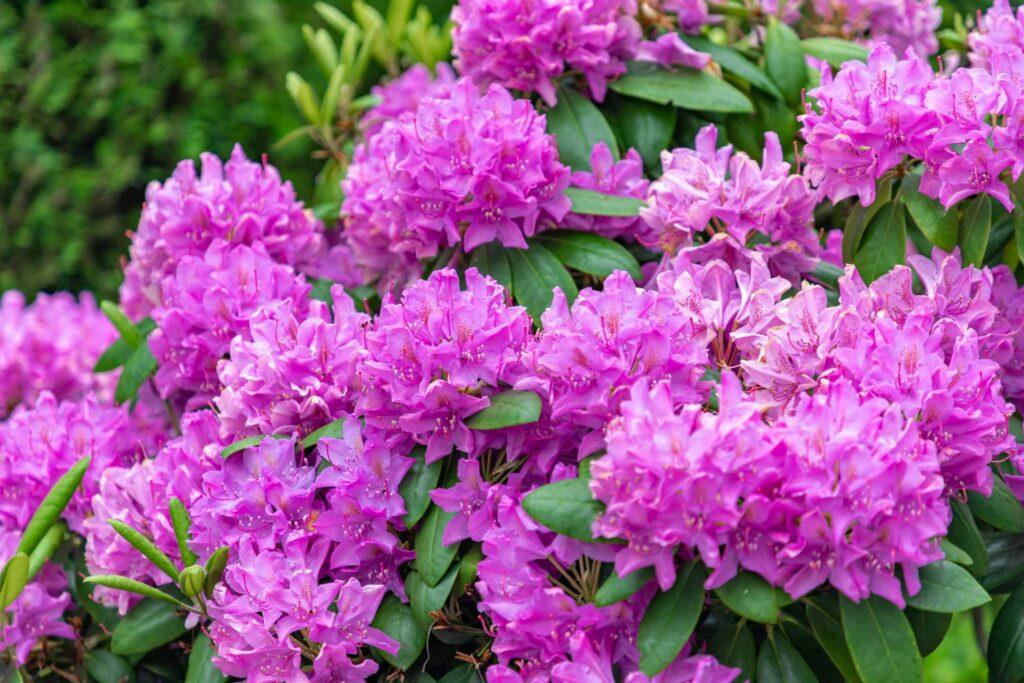Rhododendron blooms are beloved by many gardeners. However, to ensure abundant flowering, proper care and protection from disease are essential. Discover all you need to know about rhododendron care.

Find out how to take care of your rhododendron – so that it will show its beautiful flowers [Photo: Wut_Moppie/ Shutterstock.com]
Rhododendrons (Rhododendron) belong to one of the largest genera in the heath family (Ericaceae). With over 1,000 species worldwide, the rhododendron can be found almost anywhere. Consequently, it can be susceptible to various pests and diseases. We provide expert tips on proper care and effective pest and disease control, so your rhododendron can continue to bloom in all its splendor.
Rhododendron Care
Rhododendrons are relatively low-maintenance plants. However, they do require attention at certain times of the year. Before we delve into the specifics, it’s important to note that there are certain considerations to keep in mind even before planting a rhododendron. These plants prefer slightly acidic soil and detest waterlogging. However, many soils, especially in southern Germany, tend to be neutral to slightly alkaline. To combat this, it’s beneficial to dig a generous planting hole and fill it with special rhododendron soil.

Good soil preparation is worthwhile before care [Photo: ER_09/ Shutterstock.com]
How often to water newly planted rhododendron
Rhododendron plants require regular watering, especially when they’re still small. However, it’s crucial to avoid waterlogging as rhododendrons, being shallow-rooted shrubs, are highly sensitive to it. As the rhododendron grows larger and older, it needs less frequent watering because its roots become more developed. Signs that indicate the need for watering include drooping buds during flowering or curling leaves.
Note: Water your precious plant at slightly longer intervals but with a little more water. During dry spells, especially, small amounts of water can quickly evaporate before penetrating the soil.
Fertilizing
Rhododendrons thrive with long-term fertilization. The best time for this is in spring, shortly after planting for freshly planted shrubs. Work the fertilizer into the root zone to allow the nutrients to be better absorbed by the soil. When planting, mix bone meal, compost, and/or coffee grounds with the excavated soil and then return it to the planting hole. These organic fertilizers slightly acidify the soil, promoting soil life. While coffee grounds lower the soil pH and provide minimal nutrients, compost delivers long-term nutrients, and bone meal provides long-term nutrient release with a high nitrogen content. If you prefer regular fertilization over slow-release fertilizers, discontinue fertilization in early October to induce dormancy.
For well-established rhododendrons in your garden, experts recommend giving the shrub an energy boost a few weeks before flowering with a mixture of mineral and organic fertilizer. Watch this video to learn more.
In addition to the above home remedies, there are also special rhododendron fertilizers available on the market. These fertilizers cover a wide range of nutrients and replenish them in the medium term, some fully organic. A plant-based fertilizer, such as our Plantura Hydrangea Food, is also suitable for rhododendrons. The slow-release fertilizers gently release nutrients over an extended period, providing iron to the rhododendron.
Note: Under special circumstances, a second fertilization may be necessary in summer if leaves become yellow and withered due to nutrient deficiency.
To learn more about properly fertilizing your rhododendrons, don’t forget to check this resource.
Pruning Rhododendrons
In general, rhododendrons do not require extensive pruning to bloom profusely. However, over time, the shoots tend to lignify, so rejuvenation pruning becomes necessary. It’s advisable to carry out radical rejuvenation pruning before flowering to conserve energy reserves and avoid disturbing nesting birds.
Using sharp rose shears, cut off old shoots to allow light to reach the bare interior of the bush. Ensure that you cut the shoots at an angle to prevent the accumulation of dew or rainwater, which could lead to disease. If you only want to maintain the shape of your rhododendron without radical pruning, perform comprehensive maintenance pruning right after flowering. This involves removing unsightly, diseased, and injured shoots until you’re satisfied with the growth habit of your beloved plant.
For more tips and tricks on pruning your rhododendron, refer to this comprehensive guide.
After Flowering: Deadheading Rhododendron Flowers
After completing a thorough pruning, you can still do something beneficial for your rhododendron. Simply remove all the withered flowers from the remaining shoots. This promotes bud formation for the next year and eliminates spore foci, preventing fungal infestation.

Break off any wilted flowers to encourage budding [Photo: Elena Glezerova/ Shutterstock.com]
Rhododendron Diseases
The rhododendron genus is particularly susceptible to fungal diseases, while animal pathogens can also damage its evergreen foliage.
Rhododendron with Yellow and Brown Leaves
Discoloration of the leaves usually has two causes: improper care or fungal attack. To address discoloration, you must first identify the source of the damage. Improper care leading to chlorosis can result from overly calcareous soil or nitrogen deficiency. In fungal infections, different yellow or brown lesions appear depending on the pathogen.

Discolored leaves can have various causes [Photo: JGade/ Shutterstock.com]
For a comprehensive list of common fungal diseases affecting rhododendrons, as well as diseases caused by animal pathogens, refer to this resource.

